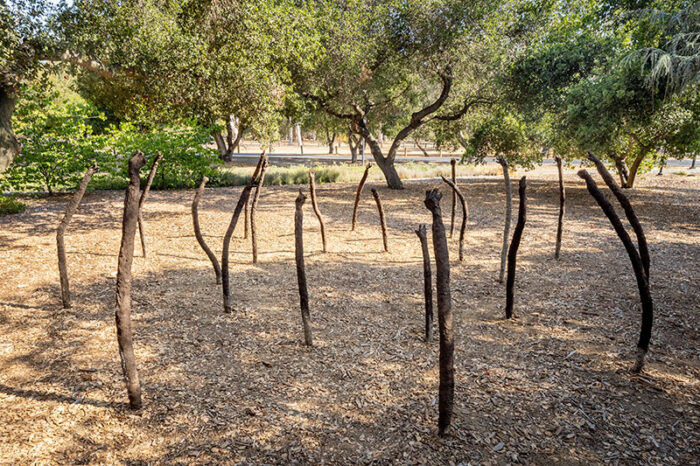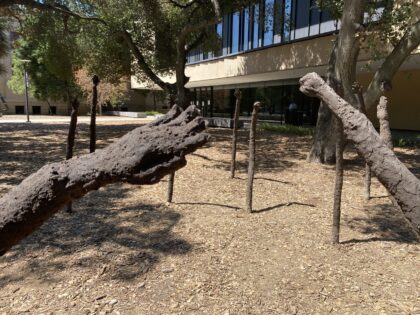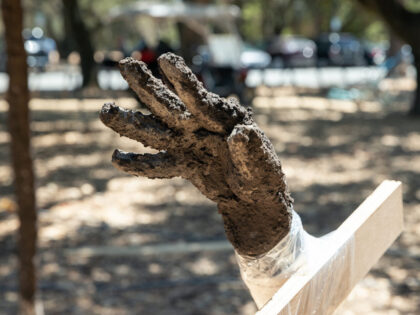Kiyan Williams

Kiyan Williams is a visual artist and writer from Newark, NJ who works fluidly across performance, sculpture, video, and 2D realms. Rooted in a process-driven practice, they are attracted to quotidian, unconventional materials and methods that evoke the historical, political, and ecological forces that shape individual and collective bodies.
Kiyan Williams’ Reaching Towards Warmer Suns, is a public work on view on the grounds of the Anderson Collection, among a grove of oak trees. The piece was originally installed along the banks of the Powhatan River (James River) in Richmond, Virginia, where some of the first enslaved Black people touched land in the new/ruined world. The work is made of soil from the river and emerged from artist and Stanford alum Kiyan Williams’ time along the slave docks of Virginia within the context of the pandemic and protests against on-going anti-Black police violence. Williams explained how the sculpture arose from a need to mark the paths of slavery as sacred, and “memorialize on-going struggles of self-determination for Black people.”
You can watch Notes on Digging, a video of the artist speaking about Reaching Towards Warmer Suns here.
You can listen to an audio guide that accompanied this piece when it was installed at Socrates Sculpture Park here.
Listen to the artist’s video of poet Lucille Clifton reciting her poetry among the backdrop of Reaching Towards Warmer Suns here.
Image by Andrew Brodhead.
Reaching Towards Warmer Suns: A Conversation with Kiyan Willams and A-lan Holt
Click below to watch this recorded conversation between artist Kiyan Williams and A-lan Holt, director of the Institute for Diversity in the Arts at Stanford as they speak about his life and work as well as the role of artists as makers, thinkers, and scholars live at the Anderson Collection.






